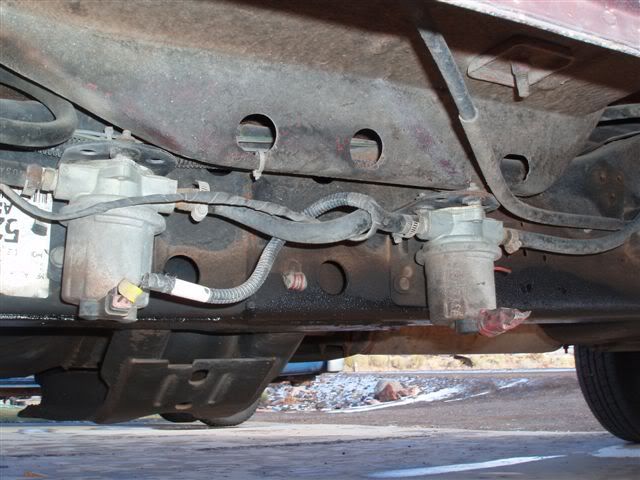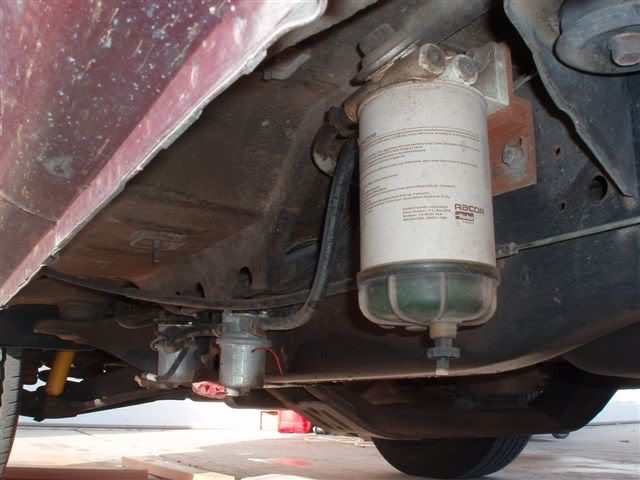Lift Pump failures
#1
Lift Pump failures
I have seen much information here about lift pump failure and subsequent injection pump degradation/failure. I have read much of the same on the older GM models - prior to the DMAX. GM researched the problem and found that almost all lift pump failures were due to moisture and/or contamination. I personally replaced the failed lift pumps on both GMs in the sig. My fix and the the fix suggested on several GM forums is to install a 30 micron filter prior to the lift pump.
Anyone doing this or recommending this on the CTDs? Good idea, bad idea?
Anyone doing this or recommending this on the CTDs? Good idea, bad idea?
#5
Centrifugal (electric) pumps push much more effectively than they pull. Switching to an electric transfer pump and leaving it on the engine where the previous mechanical pump used to go was just sloppy engineering on Dodge's part. Electric fuel pumps need to be mounted in or very near the fuel tank to work well and last. The older style mechanical pump is a "positive displacement" type and can pull fuel up to itself much more effectively.
Randy.
Randy.
#6
Centrifugal (electric) pumps push much more effectively than they pull. Switching to an electric transfer pump and leaving it on the engine where the previous mechanical pump used to go was just sloppy engineering on Dodge's part. Electric fuel pumps need to be mounted in or very near the fuel tank to work well and last. The older style mechanical pump is a "positive displacement" type and can pull fuel up to itself much more effectively.
Randy.
Randy.
#7
Centrifugal (electric) pumps push much more effectively than they pull. Switching to an electric transfer pump and leaving it on the engine where the previous mechanical pump used to go was just sloppy engineering on Dodge's part. Electric fuel pumps need to be mounted in or very near the fuel tank to work well and last. The older style mechanical pump is a "positive displacement" type and can pull fuel up to itself much more effectively.
Randy.
Randy.
the pump on the left is the one in use at this time, the one on the right is a backup .... if the front one fails, i unplug one and plug the other in.
also i have a racor 2 micron filter plumbed in before both
of them


Trending Topics
#9
#10
Since I moved mine to the framerail I have had no failures. It has been there for 100,000 miles and the pressure is the same as the day I mounted it there. Maybe I am lucky...but I went through 2 on the block...
I like having it mounted at the lowest point so it always has fuel in it.
I also like the idea of running a filter before the pump...good idea.
I like having it mounted at the lowest point so it always has fuel in it.
I also like the idea of running a filter before the pump...good idea.
#11
I'd say you're lucky. I have mine on the frame rail and I've gone through 4 in 50K miles after the relocation. My next one will be an Airdog because I'm getting a little too good at replacing these things.

#12
Since I moved mine to the framerail I have had no failures. It has been there for 100,000 miles and the pressure is the same as the day I mounted it there. Maybe I am lucky...but I went through 2 on the block...
I like having it mounted at the lowest point so it always has fuel in it.
I also like the idea of running a filter before the pump...good idea.
I like having it mounted at the lowest point so it always has fuel in it.
I also like the idea of running a filter before the pump...good idea.
#13
I do not have a dodge yet so, I wanted to make sure that I have the sequence of the parts correct in the fuel system:
fuel tank -> lift pump -> filter -> injection pump ...
Is this correct? Thanks!
fuel tank -> lift pump -> filter -> injection pump ...
Is this correct? Thanks!
#14
#15
Johnh, I totally agree that is the way it SHOULD BE but I was trying to find out how the sequence is on a stock fuel system. Was my sequence from the above post correct on a stock truck? Thanks again!


